Superfamily Hemerobioidea Rank Family | Scientific name Hemerobiidae Order Neuroptera | |
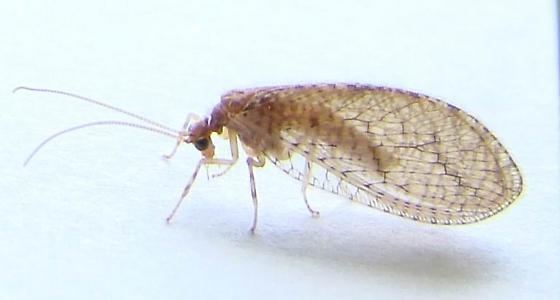 | ||
Similar Neuroptera, Insect, Hemerobius, Micromus, Coniopterygidae | ||
Lacewing larvae neuroptera hemerobiidae the predator
Hemerobiidae is a family of Neuropteran insects commonly known as brown lacewings, comprising about 500 species in 28 genera. Most are yellow to dark brown, but some species are green. They are small; most have forewings 4-10 mm long (some up to 18 mm). These insects differ from the somewhat similar Chrysopidae (green lacewings) not only by the usual coloring but also by the wing venation: hemerobiids differ from chrysopids in having numerous long veins (two or more radial sectors) and forked costal cross veins. Some genera (Hemerobius, Micromus, Notiobiella, Sympherobius, Wesmaelius) are widespread, but most are restricted to a single biogeographical realm. Some species have reduced wings to the degree that they are flightless. Imagines (adults) of subfamily Drepanepteryginae mimic dead leaves. Hemerobiid larvae are usually less hairy than chrysopid larvae.
Contents
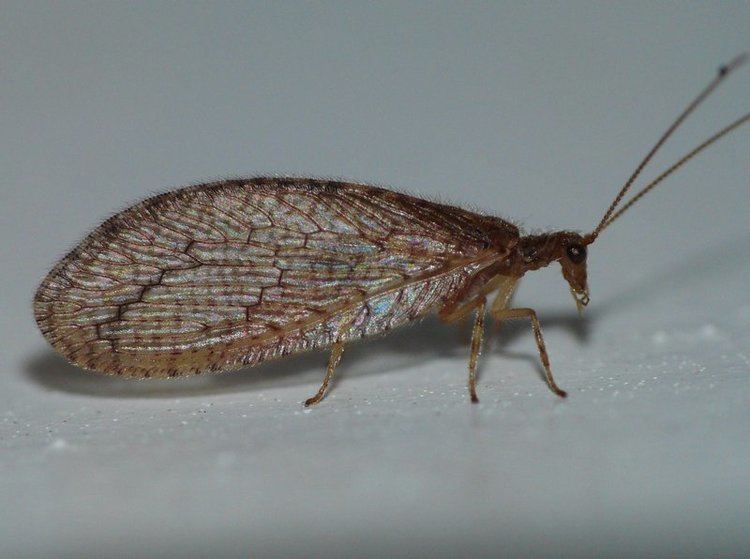
Hemerobiids, like chrysopids, are predatory, especially on aphids, both as larvae and adults. The species Micromus tasmaniae is bred for biological pest control.
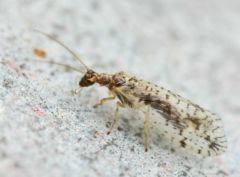
Hemerobiidae
Systematics
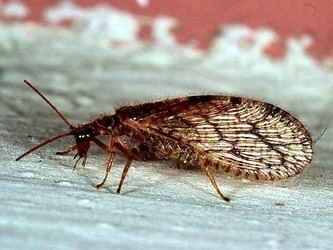
The relationships between the Hemerobiidae and the other Neuropteran families are still unresolved. Despite their superficial similarity to chrysopids, the brown and green lacewings may not be as closely related as was at one time believed. Rather, the Hemerobiidae appear to be closely related to the Mantispidae.

The superfamily Hemerobioidea is currently restricted to the Hemerobiidae. Formerly, the pleasing lacewings (Dilaridae), silky lacewings (Psychopsidae), giant lacewings (Polystoechotidae) and as noted above the green lacewings (Chrysopidae) were placed therein too. Of these, only the Dilaridae and Chrysopidae seem to be reasonably close relatives of the brown lacewings. The Psychopsidae in fact seem to belong to an altogether different suborder of Neuroptera, the Myrmeleontiformia.
The subfamilies of Hemerobiidae are:
Apart from the genera assigned to subfamilies, the genus Notherobius is of uncertain or fairly basal position.
Fossils
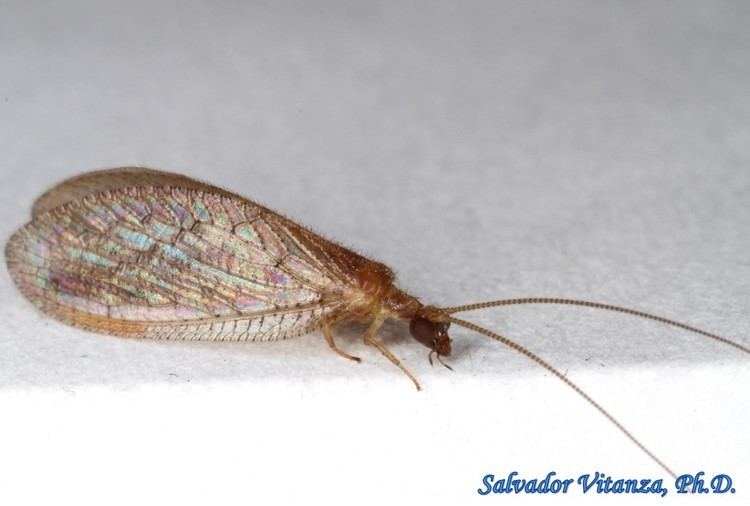
Numerous fossil Hemerobiidae have been described, some from the still-living genera, others from genera that are entirely extinct today. While most have been found in Eocene to Miocene rocks or amber, Promegalomus is known from the Jurassic. It was formerly considered to constitute a distinct family Promegalomidae, but is currently recognized as a very basal member of the Hemerobiidae. The Cretaceous Mesohemerobius was formerly considered a brown lacewing, but is today rather placed as incertae sedis in the Neuroptera; it might be a member of the Hemerobioidea but not even that is certain. Notable fossil Hemerobiidae genera are:
The extinct genus Hemerobites was originally described in 1813 from a specimen preserved in Baltic amber as a hemerobiid. However further study has resulted in its synonymy with the genus Eutermes and placement in the termite subfamily Termitina. The species Wesmaelius mathewesi, was described in 2003 from a solitary Eocene fossil found near Quesnel, British Columbia, and placed into the extant genus Wesmaelius. At that time it was the oldest Hemerobiinae species described.
Some additional brown lacewing larvae have been found as fossils, but it has been impossible to determine their generic or subfamilial association.
